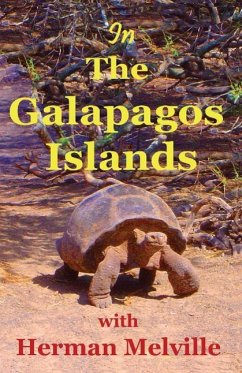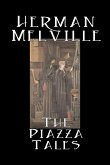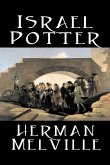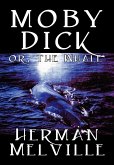Sail to the exotic Galapagos Islands with Herman Melville, author of "Moby-Dick." Let History and Legend, Fiction and Fact, Myth and Mystery swirl around you as you enter "The Encantadas," a unique island world stretching along our planet's Equator. ~ Discover teeming seabird rookeries, stark volcanic landscapes, and world famous giant tortoises . . . ~ Meet buccaneers and explorers, colonists and castaways, whalers and naturalists . . . ~ Explore these Enchanted Isles with one of America's greatest writers . . . ~ Enrich your once-in-a-lifetime visit to . . . The Galapagos Islands. Travelers have been arriving in the Galapagos Islands since at least 1535. While naturalist Charles Darwin made these volcanic peaks famous, Spanish explorers, English buccaneers, American whalers, Ecuadorian colonists, and a United States President all put in appearances here over the centuries. Herman Melville was one such visitor. He first glimpsed the Galapagos Islands as a young seaman on the whaler "Acushnet" out of New Bedford, Massachusetts. Years later, after the failure of his novel "Moby-Dick," he tried to regain his lost popularity with the reading public by writing a series ten of magazine sketches recalling the strange worlds he found in these Enchanted Isles. This current book was created for today's visitor-or armchair visitor. Bring it with you, or read it before you leave home. Enhance your enjoyment of the Galapagos Islands with these glimpses of its captivating natural and human history written over 150 years ago by that famous fellow traveler. Discover . . . - Herman Melville's ten sketches called "The Encantadas or Enchanted Isles." - Forty of Moses Michelsohn's striking b&w photographs (in color in the ebook) from the Galapagos islands: birds, iguanas, giant tortoises, sea lions, exotic plants, and volcanic landscapes. - Lynn Michelsohn's introduction to the work, and to each individual sketch. Enjoy your visit to the Galapagos Islands! About the Authors Herman Melville wrote in the genre that has been called "dark romanticism." "The Encantadas," like "Moby-Dick" (considered by many to be the best novel ever written) and his well respected novella "Billy Budd," draws on his shipboard experiences in the South Seas as a young man. Lynn Michelsohn has written such diverse books as "Roswell, Your Travel Guide to the UFO Capital of the World!" and "Gullah Ghosts, Stories and Folktales from the South Carolina Lowcountry." Her longstanding interests in both the Galapagos Islands and Herman Melville led to this work. Like Melville, biologist and wildlife photographer Moses Michelsohn found tortoises on the Galapagos Islands fascinating. Tree frogs in Ecuador, Costa Rica, and the southeastern United States remain his primary research interest, however.








